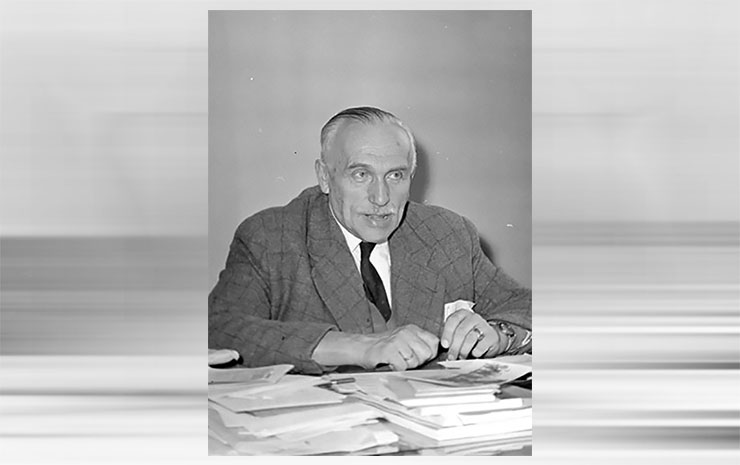Remembering founding fathers: Henryk Niewodniczański
News, 10 December 2021
On 10 December, the Joint Institute for Nuclear Research recalls one of its founding fathers – the renowned Polish experimental physicist Henryk Niewodniczański (1900–1968).
Doctor of Sciences, Professor, Academician of the Polish Academy of Sciences, he made a significant contribution to the development of the Institute, being also a member of the JINR Scientific Council in 1956 – 1968. At his suggestion, the Experimental Department of Nuclear Spectroscopy and Radiochemistry was established at the Laboratory of Nuclear Problems JINR.
H. Niewodniczański is the author of the discovery of the magnetic dipole transition (1934), and his key scientific works are devoted to nuclear physics of low energies and nuclear spectroscopy.
In 1924, H. Niewodniczański graduated from Stefan Batory University in Wilno (Poland) and two years later received his PhD from the same university. In 1927–1928, he was a scholar at the University of Tübingen, Germany. At that time, he was mainly interested in the optics of metals and molecular optics. Studying the effect of the magnetic field on the fluorescence of mercury vapour, the scientist discovered magnetic dipole radiation.
In 1934, as a fellow of the Rockefeller Foundation, H. Niewodniczański performed studies at the Royal Society Mond Laboratory and the Cavendish Laboratory in Cambridge, as one of E. Rutherford’s students. Working in the UK, he took part in the world’s first cold neutron experiments.
Upon his return to Poland in 1937, he was appointed Director of the Institute of Experimental Physics at Adam Mickiewicz University in Poznań and later became Professor of the Department of Experimental Physics at Stefan Batory University. In 1945, he started work at the Department of Experimental Physics at the Jagiellonian University in Krakow.
In 1945–1968, he was Director of the Institute of Physics at the Jagiellonian University. The year of 1955 was special for the scientist: H. Niewodniczański founded the Institute of Nuclear Physics in Kraków. The basic facility of this Institute was the Soviet-made U-120 cyclotron. In 1988, twenty years after his death, the Institute of Nuclear Physics of the Polish Academy of Sciences was named after him.
Holding managing positions, Professor Niewodniczański initiated most of the research performed at the institutes. His interest in atomic optics and nuclear physics facilitated the rapid development of these fields of physics in Kraków. Full of enduring enthusiasm and optimism, he gathered a group of young scientists who, undaunted by difficult conditions, built the necessary equipment and, inspired by the leader, began their research.
His personal traits contributed a lot to his success in scientific organization. “Thanks to his extensive knowledge, great charm and character as well as rich sense of humour, everyone who had the honour to know him loved him,” says the website of the Henryk Niewodniczański Institute of Nuclear Physics of the Polish Academy of Sciences.
